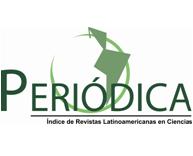Biodiesel production from Sugar Industry Residue: The mud
Keywords:
Mud, Biodiesel, TransesterificationAbstract
The work is directed to the production of a renewable biocombustible: Biodiesel, starting off of the wax present in a residue of the sugar industry, using commercial naphtha for the extraction of the wax, and superfine ethanol like transesterificant agent. A bibliographical research was realized to select the variant of more feasible production, as well as the raw materials to carry out the process, where the wax, the ethanol and the sodium etoxide catalyst, were the most attractive variants. The possibility was valued of realizing the extraction with in two stages with cross current, being from this an increase of the wax production and the yields by liter of solvent. The methodology was determined to carry out the reaction of transesterification using ethanol with a purity of 96ºGL and relations of feeding to the Discontinue Reactor with Agitation, of 3,5 and 15 mol of ethanol/mol of wax, being from this last soap formation during the reaction. Besides the obtaining of Biodiesel, as coproduct were obtained the Fatty Acid Alcohol (AAPM). The conversion of the wax was acceptable (73%), and the difference with the reported values, must to the water presence in the ethanol.




















